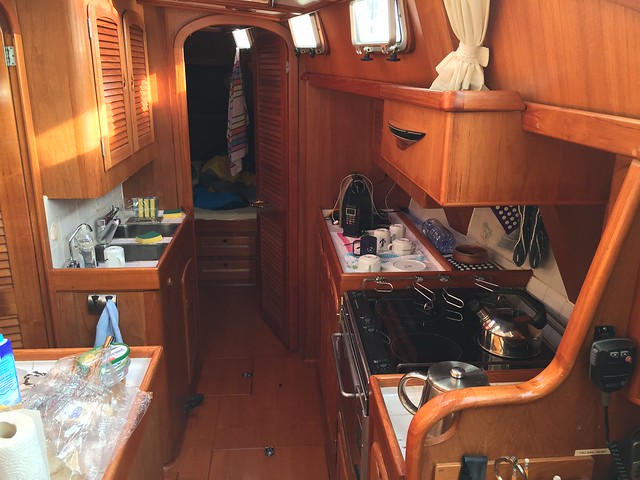There’s a lot of times I take friends and friends of frends for sailing trips. Most of the times they are total beginners in sailing and the basics need to be taught on-the-go. They might read an article on how to pack for the trip (this or this), but it’s your responsibility as the Skipper to give them guidence and your your ship.
So here’s the guide to get them up and running in 30 minutes.
Introduction
- Rolls on a Ship: You are a skipper, and they are the crew.
- Commands: Everyone is a bit different and “Bring in the rope” might seem short to some. Indicate why its short and the benefit to running a solid ship.
- Crew: Know your crew. Ask who can’t swim, who will be just looking around and who will help you.

The Boat
- Port vs Starboard: Start with these terms from the beginning. The easiest saying is “Do you have any port left?” to remember that port is the left side.
- Fenders: They fend off problems from expensive boat hull. They come into the boat locker upon leaving the marina.
- Cleat: We fix and release the lines from the cleat, as well as “take lines off” of a cleat. Sometimes we hold the line on a cleat with a tention. Let them know what that is.
Safety
- Life Vests: Show the crew how to put on and properly fit the life vest.
- Man Overboard: If someone falls in the water, this is the proper phrase to shout.
- Boom: Everyone should watch out for the boom, especially our tall Dutch crew members.
- Your fingers: They can get easily caught between a line and a cleat or a winch and a line. We want everyone to leave with the number of fingers they came with.
- Stepping on/off board, holding the rigging
- While onboard: one hand for yourself another one for the boat (hold on well)
- Move on the deck - keep low when it can if there are waves
- Slippery deck danger
- Importance of not falling into the water and how to behave if it happens

Your Commands
- “Bring in the …”: You might say “bring in the line” or “bring in the fender” and clarifying that phrase ahead of time will avoid general confusion.
- “Prepare to …”: “Prepare to release the line”. To someone new that means nothing. Tell them how to do it properly.
- “Release the …”: It mean completely let go of the line from its fixed point on shore or another mooring point.
- “Fend off the …”: We say “fend off the boat” if leaving the harbor with a less than perfect result. Tell them how to do it with your hands or a fender.
Their responses
- “Clear”: If a rope is released and back in the boat, then the crew member says “clear”.
- “Ready”: When getting ready to cast off, we need to know that each crew member is ready and need to shout it at the needed time.

Rope/Line Basics
- Line: Indicate that a line is a rope. Sheet is also. We throw, tie, untie, grab, hold and winch lines, so their key for all crew members.
- Check for lines: Before turning on the engine, we should check for lines. It’s an easy task for a crew memeber to do.
Knots
- Rolling Hitch - Beginners need to know how how to tie fenders when you enter the marina. Otherwise you’ll need to do a lot of “Fender Over Board” manuovers…
- Cleet Hitch - You want to be sure if you will be parking your boat that a new sailor will properly tie that mooring line you gave him. OXO is an easy way to remember.
Inside
- Gas switch - Show how to turn it on and stress to turn it off when not in use.
- Toilet - Show how to use it. Stress not to throw stuff in it.
- Show where the fire extinguisher is, the medical kit, where the safety items are
- Light switches - Show where the motoring light switch is
Preparing for departure:
Close the hatches, secure all moving parts/loose items/personal items


 By
By